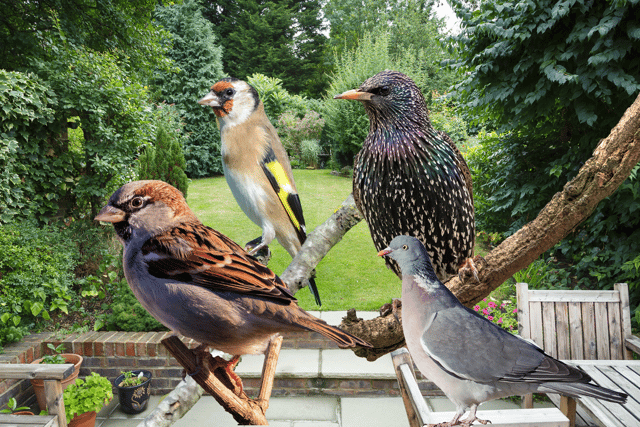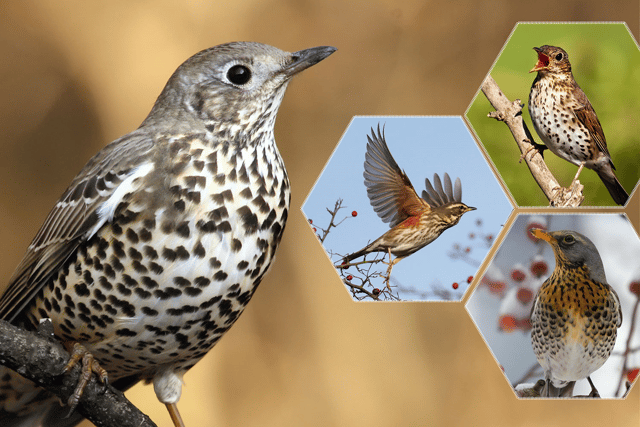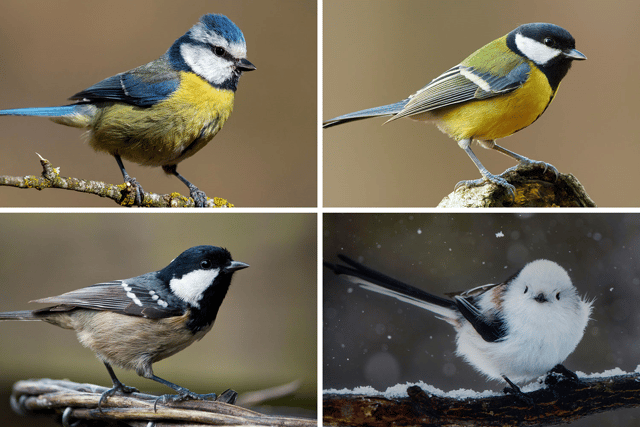Big Garden Birdwatch 2024: Which birds you might spot in your garden - and how to tell them apart
and live on Freeview channel 276
Britain's favourite garden birds are counting on us to count them, with even some of the most common species seeing drastic declines in numbers.
This weekend (26-28 January) is the Royal Society for the Protection of Birds' (RSPB) Big Garden Birdwatch. Thought to be the biggest garden wildlife survey in the world, the annual citizen science event usually sees hundreds of thousands of Britons spending an hour tallying up sparrows, finches, thrushes and more in their own backyards - or local parks, schools, and green spaces.
Advertisement
Hide AdAdvertisement
Hide AdAs well as being a great chance to reconnect with nature, the survey helps experts get a clearer picture of how the UK's bird species are doing. This is increasingly vital, at a time when the UK is experiencing a staggering loss of wildlife - with a recent report suggesting one in six species are at risk of being lost from Great Britain forever. The garden birds people will be counting this weekend are no exception, the RSPB says, with 38 million fewer birds in our skies today than half a century ago - with common species like house sparrows falling 57% in numbers since the survey began.
But with so many different birds calling the UK home, which ones are you most likely to see during your count this weekend? And for the likes of thrushes and tits which can look rather similar, how can you tell them apart? Here's everything you need to know:
Which garden birds are you most likely to see?
Gardens across the UK have the privilege of being visited by all manner of bird species, from more frequent flyers like plump wood pigeons, to rarer winter migrants - like the elusive waxwing. Looking back to last year's Big Garden Birdwatch results, here were the ten most commonly seen birds during Britain's collective count:


Top 10 birds spotted in the Big Garden Birdwatch 2023
1. House sparrows - 1,401,338 counted (their 20th year in the top spot!)
2. Blue tits - 904,637 counted
3. Starlings - 904,079 counted
4. Wood pigeons - 750,251 counted
5. Blackbirds - 716,734 counted
6. Robins - 498,612 counted
7. Goldfinches - 491,934 counted
8. Great tits - 452,750 counted
9. Magpies - 393,725 counted
10. Long-tailed tits - 339,793 counted
Advertisement
Hide AdAdvertisement
Hide AdHowever, it's also worth noting than many bird experts believe that we are experiencing an irruption this winter. This is when berry and other food sources fail in Scandinavia, resulting in much higher numbers of migratory birds visiting the UK than usual.
This means rarer visitors like waxwings, redwings, bramblings, and perhaps even hawfinches might also visit your garden. You can learn more about these winter visitors here.


Lookalikes - and how to tell them apart
Blackbirds are perhaps the most distinctive local members of the thrush family, with their solid black or brown hue. Others, like the song and mistle thrush, and winter visitors like the redwing and fieldfare, look much more similar to one another - with their tan backs and wings, and mottled bellies. But there are a few key ways to tell them apart.
The song thrush, a year-round resident, has warmer colouring than the mistle thrush, according to the Wildlife Trusts. Its tail is solid brown, and the speckles on its chest usually look more like upside down hearts. The mistle thrush is a little larger than the song thrush, and its cooler tones can make it seem almost grey in comparison. Its tail and flight feathers also have white tips, while its speckles are a little rounder.
Advertisement
Hide AdAdvertisement
Hide AdVisiting redwings are the smallest of the lot. Like their name suggests, they have a ruddy red patch beneath their wings, which often spreads to their flanks. They also have a distinctive white 'eyebrow' above their eyes. Another visitor, the fieldfare, has a notably blue-grey head that sets them apart from other thrushes. They also have a buff-coloured patch at the top of their chest, which is covered in darker speckles than the redwing's - and if you see them in flight, they have white patches beneath their wings rather than red.


The UK is also home to quite a few tit species, although there are only four which frequently visit our gardens. These are the blue tit, the great tit, the coal tit, and the long-tailed tit. The great tit is the largest of these, and can be identified by the single white patch on each cheek, as well as a particularly thick black line down their belly at this time of year. It's best known for its two-beat call (which sounds like 'tea-cher, tea-cher, tea-cher).
The coal tit has similar face markings, but is a little smaller. Its back feather are greyer than a great tit's, while its belly is more of a ruddy brown that their larger cousin's bright yellow. Notably, they also have a third white patch on the back of their heads.
Blue tits have similar colouring to great tits, but are also smaller. Their backs are a more vivid blue, and they can raise the blue feathers on their heads into a tiny crest. They also have much whiter faces, with just a thin black band crossing the eye; and a much thinner, 'broken' black belly stripe.
Advertisement
Hide AdAdvertisement
Hide AdIt's not hard to guess the long-tailed tit's defining feature - its tail is considerably longer than other tit species. These mostly black-and-white birds tend to flit through trees in flocks - they also have a 'rounded' appearance, and two strong black bands running from above the eyes to the nape of their necks.
If you get yourself really stuck or are unfamiliar with many British birds, you can try downloading the Merlin app, developed by Cornell University in the US. It allows you to record birds singing, chirping, warbling and trilling - and uses AI to tell you which species you're hearing. Merlin in available for free on the App Store or Google Play.
Comment Guidelines
National World encourages reader discussion on our stories. User feedback, insights and back-and-forth exchanges add a rich layer of context to reporting. Please review our Community Guidelines before commenting.
